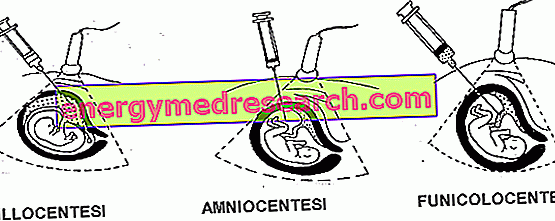NERISONA ® is a Diflucortolone valerate based drug
THERAPEUTIC GROUP: Corticosteroids, associations with antiseptics
IndicationsAction mechanismStudies and clinical effectiveness Usage and dosage instructionsWarnings Pregnancy and lactationInteractionsContraindicationsUndesirable effects
Directions NERISONA ® Diflucortolone
NERISONA ® is indicated in the treatment of inflammatory dermatological pathologies sensitive to therapy with topical corticosteroids.
Mechanism of action NERISONA ® Diflucortolone
NERISONA ® is a medicinal product based on Diflucortolone valerate, a synthetic corticosteroid that is particularly effective in the treatment of inflammatory skin diseases, given the excellent ability to penetrate the most superficial layers of the skin, evenly distributing these cells. Like the other corticosteroids also Diflucortolone is able to:
- reduce the production of inflammatory mediators, blocking upstream the cascade of molecular events initiated by phospholipase A2;
- stabilize the lysosomal membranes avoiding the release of lytic enzymes;
- reduce on-site recall of cellular elements of phlogosis such as mast cells;
- exert an evident anti-itching, anti-edema and anti-vascular dilatation action.
The aforementioned biological mechanisms are therefore responsible for the rapid regression of the symptomatology that is observed following the use of NERISONA ®.
Studies carried out and clinical efficacy
CHITOSAN AND LECITHIN AS CARRIRE DEL DIFLUCORTOLONE Int J Nanomedicine. 2013; 8: 461-75. doi: 10.2147 / IJN.S40519. Epub 2013 Jan 30.
Interesting pharmacokinetic work in line with current results, which demonstrates the effectiveness of nano particles of lecithin / chitosan in optimizing the release of Diflucortolone valerate thus optimizing the therapeutic efficacy of the drug.
DIFLUCORTONLONE AND INTERTRIGINE BY CANDIDA Mycoses. 2013 May; 56 Suppl 1: 41-3. doi: 10.1111 / myc.12058.
Clinical case that describes the therapeutic efficacy of the topical association between Diflucortolone valerate and Isoconazole nitrate in the treatment of interstitial Candida albicans at the inguinal level, improving the extent of clinical lesions in just 3 days of treatment.
DIFLUCORTOLONE AND ISONAZOLE IN THE TREATMENT OF TINEA PEDIS Mycoses. 2008 Sep; 51 Suppl 4: 48-9. doi: 10.1111 / j.1439-0507.2008.01609.x.
Study that describes the therapeutic success of Diflucortolone valerate and isoconazole nitrate in the topical treatment of tinea pedis, emphasizing therapeutic efficacy and high safety in clinical use.
Method of use and dosage
NERISONA ® Cream for skin use, hydrophobic cream, ointment and 0.1% Diflucortolone valerate skin solution. The choice of the pharmaceutical format, the dosage and the timing of intake is the responsibility of the physician after assessing the patient's general health and the severity of his clinical picture. In principle, 2-3 applications per day of the appropriate amount of medicine are recommended, taking care to gently massage the area to mediate absorption.
Warnings NERISONA ® Diflucortolone
Therapy with NERISONA ® should be preceded by a careful medical examination in order to clarify the origin of the lesion and any prescriptive appropriateness. In general, the patient in therapy, in order to limit the incidence of possible side effects and maximize the effectiveness of the therapy itself, should:
- clean hands thoroughly after each application;
- avoid contact of the drug with eyes and mucous membranes;
- avoid applying the drug on particularly large areas;
- limit the use of the drug to the strictly necessary time;
- use the occlusive bandage technique exclusively under medical prescription;
- consult your doctor following the appearance of possible side effects;
- consider all possible adverse reactions of the product in the case of use in a pediatric patient.
PREGNANCY AND BREASTFEEDING
Given the main side effects of corticosteroids for fetal health, it would be appropriate to extend the aforementioned contraindications to the use of NERISONA ® also to pregnancy and the subsequent breastfeeding period.
Interactions
At the present time, known pharmacological interactions are not known, although it should be remembered that the simultaneous intake of cytochrome inhibitor drugs may increase blood concentrations of the amount of corticosteroid absorbed.
Contraindications NERISONA ® Diflucortolone
The use of NERISONA ® is contraindicated in patients who are hypersensitive to the active ingredient or to one of its excipients, in patients suffering from inadequately treated viral, bacterial and fungal infections and atopic dermatitis.
Undesirable effects - Side effects
The use of NERISONA ®, especially when prolonged over time, could cause local side effects such as redness, burning, erythema, dermatitis, hypertrichosis, skin discoloration, skin atrophy and telangiectasias. Fortunately, systemic adverse reactions such as inhibition of the hypothalamic-pituitary-adrenal axis are rarer, which in any case should be considered especially in pediatric patients.
Note
NERISONA ® is a drug subject to mandatory medical prescription.



